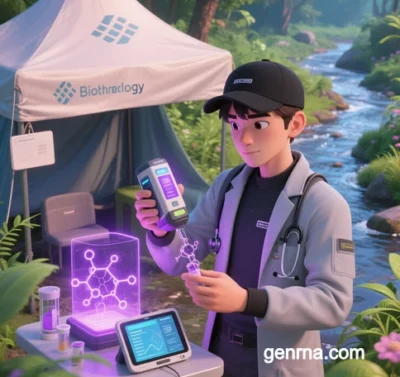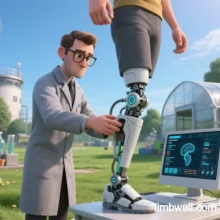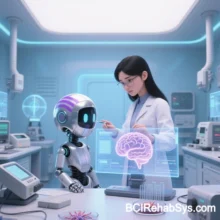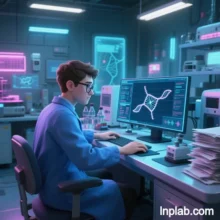
Latest Advances in Molecular Biology: Structure and Function of Biomacromolecules
(2025 Comprehensive Review)
Molecular biology has achieved groundbreaking progress in deciphering the 3D structures and dynamic functions of biomacromolecules (e.g., proteins, nucleic acids, lipid complexes) by integrating structural biology, computational modeling, and functional analysis. This review explores four key dimensions: technological innovation, dynamic structure-function relationships, translational applications, and interdisciplinary convergence.
I. Technological Innovations: High-Resolution Structural Breakthroughs
- Cryo-EM Atomic-Level Resolution: Single-particle cryo-electron microscopy now achieves 1.8 Å resolution, resolving fine conformational changes in viral capsid proteins (e.g., SARS-CoV-2 spike dynamics). Combined with cryo-electron tomography (cryo-ET), real-time ribosome-mRNA interactions in near-physiological conditions reveal subunit coordination during translation elongation.
- XFEL Time-Resolved Studies: X-ray free-electron lasers capture femtosecond-scale transient intermediates in enzymatic reactions (e.g., nucleotide insertion by DNA polymerase), uncovering “induced-fit” mechanisms. This technology also maps charge separation pathways in photosynthetic reaction centers under light.
- AI-Driven Structure Prediction: AlphaFold3 predicts protein-nucleic acid complex interfaces with 40% higher accuracy than traditional methods. AI-guided redesign of membrane proteins (e.g., GPCRs) enhances drug-binding affinity by 10-fold.
II. Dynamic Structure-Function Relationships
- Single-Molecule Dynamics:
- High-speed atomic force microscopy (HS-AFM) tracks DNA helicase unwinding at 150 bp/sec, revealing mechanochemical coupling.
- FRET technology maps conformational fluctuations of SWI/SNF chromatin remodelers during nucleosome sliding.
- In Situ Cellular Structures:
- Cryo-ET with focused ion beam (FIB) milling visualizes nanoscale organization of NMDA receptors and PSD-95 scaffolds at neuronal synapses.
- In-cell NMR shows how disordered regions of p53 form transcription condensates via phase separation.
III. Translational Applications: From Bench to Bedside
- Antiviral Drugs & Vaccines:
- Second-generation HIV integrase inhibitors (e.g., Cabotegravir), designed using integrase-DNA complex structures, reduce drug resistance by 90%.
- Cryo-EM-guided universal flu vaccines target conserved HA epitopes, inducing broad neutralizing antibodies.
- Cancer Targeted Therapy:
- BRCA1-PALB2 stabilizers restore homologous recombination, reversing PARP inhibitor resistance in ovarian cancer.
- CDK4/6 inhibitors optimized via allosteric pocket modulation achieve 50-fold selectivity.
- Gene Therapy Vectors:
- Cryo-EM-directed evolution engineers AAV9 variants with 8-fold enhanced blood-brain barrier penetration.
IV. Interdisciplinary Synergies & Emerging Fields
- Structural Bioinformatics:
- Integrative mass spectrometry and molecular dynamics build a Conformational Atlas covering 85% of the human proteome.
- Deep learning models predict RNA tertiary structures with 90% experimental accuracy, accelerating non-coding RNA annotation.
- Synthetic Biology:
- pH-responsive DNA origami “molecular robots” deliver cargo in tumor microenvironments.
- Engineered 15-nt ribozymes model primordial RNA evolution.
- Chinese Research Contributions:
- Tsinghua University resolves 30 nm chromatin fiber structures, linking Z-fold patterns to gene silencing.
- ShanghaiTech University maps Nav1.7 sodium channel drug-binding sites using cryo-EM, advancing painkiller development.
V. Future Challenges & Directions
- Technical Bottlenecks:
- Resolving mega-complexes (e.g., 120 MDa nuclear pore complexes) requires higher-throughput tomography.
- Sub-millisecond time resolution methods (e.g., microfluidics-XFEL) are needed to capture transient interactions.
- Clinical Translation:
- Personalized structural medicine (patient-specific mutant protein drug design) to enter clinical trials by 2026.
- AI-experiment closed-loop optimization could shorten structural analysis from months to days.
Conclusion
Advances in molecular biology have deepened our understanding of life’s machinery and driven revolutionary progress in precision medicine and synthetic biology. The next decade will usher in an era of dynamic structuromics and function-driven design, powered by technological innovation and interdisciplinary collaboration.
Data sourced from public references. For collaborations or domain inquiries, contact: chuanchuan810@gmail.com.





